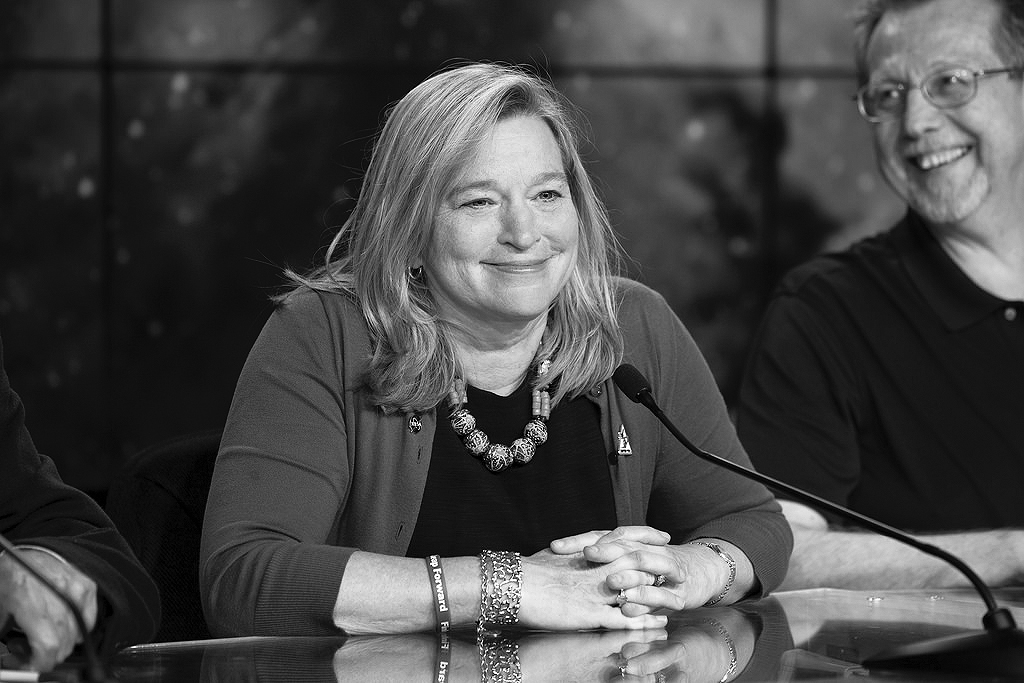NASA Chief Scientist Dr. Ellen Stofan discussed using models of other planets’ climates in order to better understand climate change on Earth. Photo courtesy of Creative Commons.
NASA Chief Scientist Dr. Ellen Stofan spoke at the Helene Fortunoff Theater in the Monroe Lecture Center about how the study of space can help us better understand Earth in order to improve our own atmosphere. The event took place on Thursday, March 8 as a part of Hofstra University’s Science Night Live series.
She has been given the opportunity to see the world through a whole new lens by participating in various space missions and conducting research using advanced telescope technology.
Stofan began by introducing the Kepler Space Telescope, a piece of technology that searches for other planets. So far, Kepler has found over 2,400 planets.
“We’re looking for potentially habitable planets around other stars,” Stofan said. “We’re always looking for liquid water. It is a fundamental of life.”
“The main purpose of observing other planets is to better understand Earth’s past, present and future,” Stofan said. Research has found that Venus has many of the same characteristics as Earth. “It is made of almost the exact same materials, it is the same distance away from the sun and it was believed to have a layer of water in the past,” Stofan said. “It’s crazy how other planets used to be very similar to Earth but have drastically changed over time,” said sophomore fine arts major Jasmine King.
Scientists are actively investigating why Earth formed differently than planets like Venus. Junior public relations major Rikki Glazer was intrigued by this relationship between Venus and Earth. “It’s really interesting hearing about the comparisons between Earth and Venus because we only ever hear about Earth being compared to Mars,” Glazer said.
“Mars remains our primary focus and is the place we really want to go,” Stofan said. It was known to be an “early wet world,” which leaves scientists to believe that life either retreated underground or died as a result of the severely cold temperatures.
Stofan explained the benefits of observing other planets’ atmospheres. “Planets like Venus and Mars have atmospheres that allow us to create models of climate that help us understand why temperature is the way it is,” she said.
Climate change can be better understood by studying these detailed models. Satellites have measured increasing global temperatures over the last 50 years, and the effects of these rising temperatures can be very devastating. “Melting ice in Greenland causes ocean levels to rise and decreasing Arctic sea ice results in odd jet stream behavior and weird weather in the Northern Hemisphere,” Stofan said.
Models released from NASA show the worst case scenario of average temperature in 2099 at approximately 113 degrees Fahrenheit. The scary part of this statistic, Stofan pointed out, is that “photosynthesis shuts down around 90 degrees Fahrenheit.”
Veronica Catricala, a sophomore education major, was shocked to hear this information. “I’m really nervous for my kids in the future. I never knew the severity of global warming,” Catricala said.
NASA has already taken on the challenge of battling global warming. They have created a satellite management irrigation support system that uses space-based observations and weather data to map out where there are crop water requirements.
Additionally, the development of SERVIR, a joint development initiative of NASA and USAID, uses satellites to collect data on climate risks and land use and then integrates this information into models that can be utilized by the people who need it.
Stofan concluded by explaining the importance of changing our habits for the betterment of our world. “We must decarbonize the economy,” Stofan said. “This is the only place we can live.”







